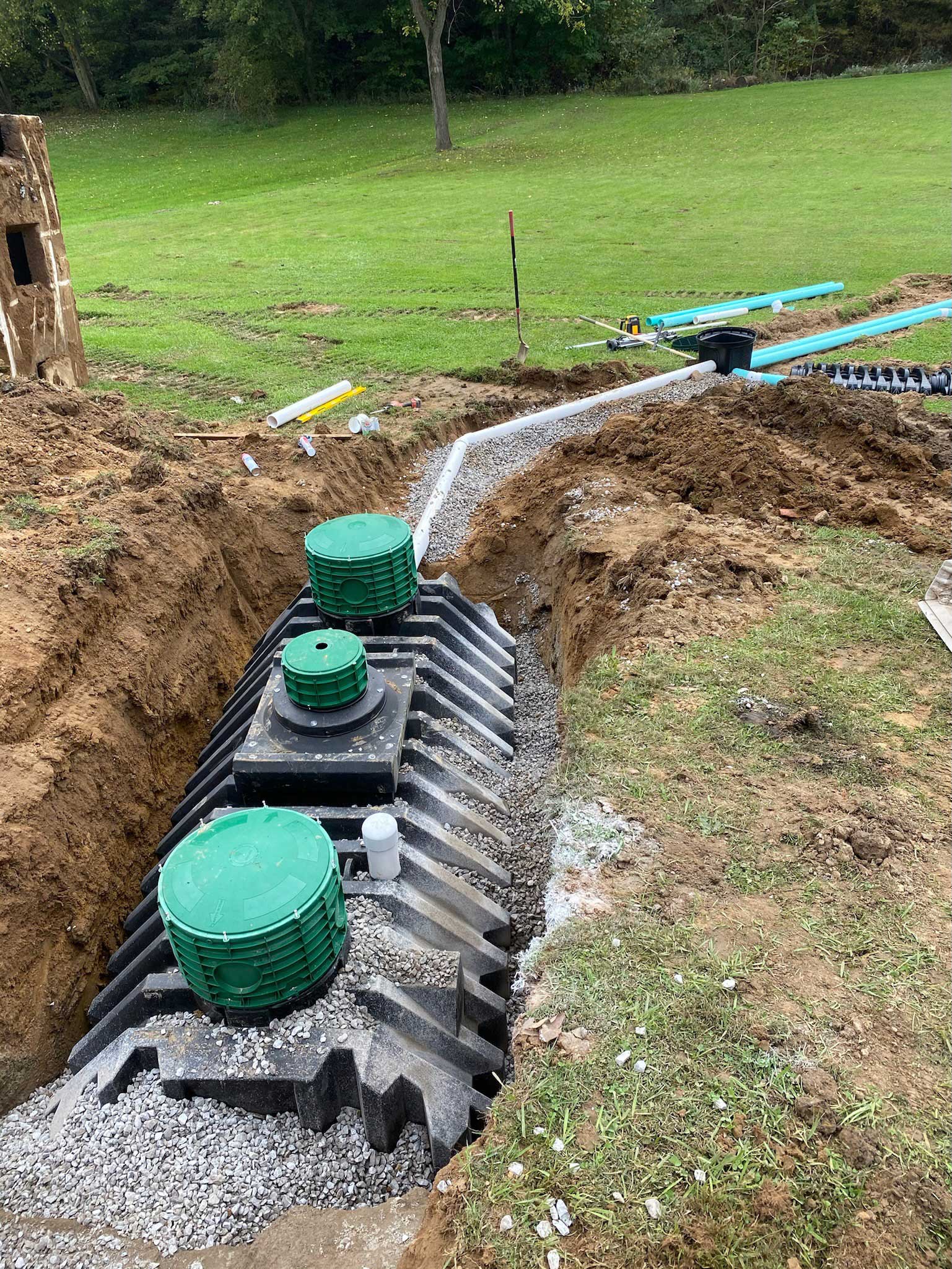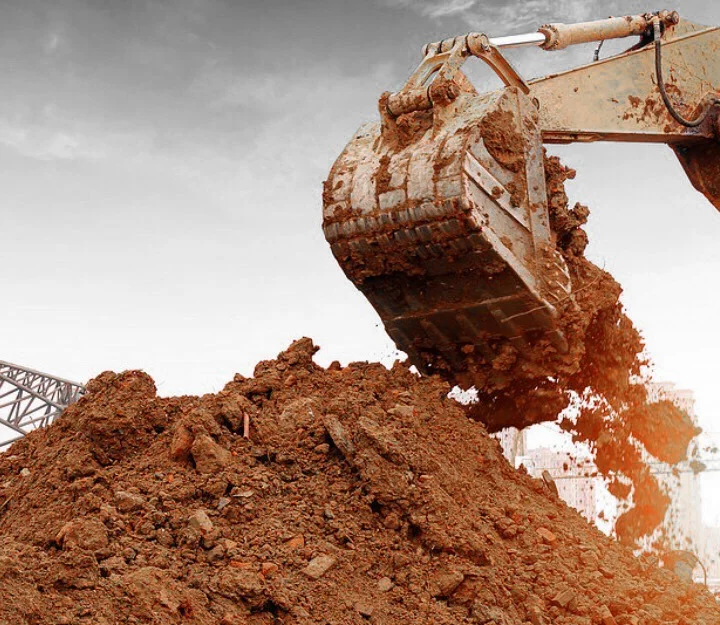Professional Septic Ohio - Relied On Septic System Specialists in Ohio
Professional Septic Ohio - Relied On Septic System Specialists in Ohio
Blog Article
Unveiling the Art of Excavation: Pro Tips for Safe and Efficient Excavating
As dirt is turned and planet is moved, the complexities of excavation reveal themselves, demanding a keen understanding of devices, soil structure, safety procedures, and ecological considerations. The competence needed to navigate these elements efficiently can imply the distinction in between a successful excavation job and a prospective calamity.
Importance of Proper Tools
To make sure the safety and effectiveness of any kind of excavation job, utilizing the ideal tools is extremely important. Excavation tasks differ in extent and complexity, varying from little residential landscaping tasks to large building and construction tasks.
Excavators are basic items of equipment in any kind of excavating operation. These functional equipments been available in numerous dimensions to suit different job requirements. Small excavators are optimal for smaller sized tasks, while bigger excavators take on a lot more substantial projects effectively. Backhoes are an additional vital tools kind, incorporating the functions of a loader and an excavator in one equipment. They are important for jobs calling for flexibility and maneuverability.
Excavators excel in tasks that require pushing huge amounts of dirt or debris. By spending in the proper devices, excavation projects can be finished securely, on time, and with precision.
Comprehending Dirt Composition
A comprehensive grasp of dirt make-up is fundamental for executing excavation projects with precision and safety. Understanding the various kinds of dirt is vital as it directly affects excavation techniques, tools option, and total job effectiveness.
Sand bits are the biggest and give great drainage yet use little cohesion. Silt fragments are smaller than sand yet larger than clay, offering modest water drainage and communication. Clay bits are the smallest and give high cohesion however inadequate drainage. Raw material, such as decomposing plant material, influences dirt fertility and stability.
Before beginning excavation, performing dirt tests to identify its composition and qualities is crucial. This information helps in selecting the appropriate equipment, applying precaution, and developing excavation strategies customized to the certain soil problems - dump truck companies in ohio. By comprehending dirt make-up, excavation specialists can boost project results while making certain safety and security and adherence to ideal techniques
Precaution and Procedures
Comprehending dirt composition is the keystone whereupon precaution and methods for excavation tasks are constructed, guaranteeing the health of employees and the success of the endeavor. When it pertains to security during excavation, there are several essential procedures that have to be applied to minimize threats and stop mishaps.
Most importantly, before any kind of digging commences, an extensive evaluation of the site ought to be performed to recognize any prospective threats such as underground energies, unsteady dirt problems, or close-by frameworks that can present a threat. It is crucial to have a skilled person look after the excavation process to guarantee that all safety procedures are followed strictly.
Additionally, all workers involved in the excavation needs to be appropriately educated in safe excavating methods and the appropriate operation of devices. By sticking to these safety actions and protocols, excavation projects can be finished successfully and without incident.
Effective Excavation Preparation
When starting an excavation task, meticulous planning is vital to guarantee performance, safety and security, and successful outcomes. Reliable excavation planning includes a number of crucial steps that are critical for the smooth implementation of the project. The initial step is to conduct a thorough website analysis to identify any type of prospective risks, such as below ground energies or unsteady soil problems. This information is essential for creating an in-depth excavation plan that consists of precaution and run the risk of reduction methods.
Once the website assessment is full, the next action is to produce a clear timeline and schedule for the excavation tasks. This includes figuring out the sequence of tasks, equipment demands, and workforce appropriation. Appropriate scheduling aids prevent delays and ensures that the project remains on track.

Moreover, communication among all staff member is paramount throughout the planning stage. Clear regulations, normal updates, and reliable control are crucial for a successful excavation job. By investing time and initiative in careful planning, excavation groups can dramatically boost productivity, reduce risks, and attain successful outcomes.

Taking Care Of Ecological Factors To Consider
With enhancing emphasis on environmental sustainability in construction practices, managing ecological factors to consider has become a vital element of excavation jobs. Excavation activities have the potential to impact the surrounding atmosphere with soil disintegration, sediment overflow, environment disruption, and contamination of water resources. To mitigate these threats, it is vital to execute ideal techniques that focus useful link on ecological defense.

Moreover, appropriate waste administration is critical to stop soil Homepage and water contamination. Applying procedures for the disposal of unsafe materials, recycling of waste products, and lessening the usage of harmful chemicals can considerably reduce the environmental impact of excavation tasks. By incorporating these methods right into excavation preparation and execution, construction firms can make sure that their jobs are not only risk-free and productive but also environmentally liable.
Final Thought
Finally, mastering the art of excavation needs a detailed understanding of appropriate equipment, soil structure, precaution, and reliable preparation. By complying with these standards and taking into consideration environmental aspects, excavations can be conducted safely and successfully. It is crucial to focus on safety and efficiency in every excavating project to guarantee effective outcomes.
As soil is transformed check over here and earth is moved, the complexities of excavation expose themselves, demanding a keen understanding of equipment, soil composition, safety methods, and ecological considerations.To guarantee the safety and security and performance of any kind of excavation project, making use of the proper tools is critical.An extensive grasp of dirt structure is basic for implementing excavation tasks with precision and safety and security. Comprehending the various kinds of dirt is crucial as it directly influences excavation techniques, devices selection, and general job effectiveness. By recognizing soil structure, excavation specialists can improve job results while guaranteeing safety and security and adherence to ideal techniques.
Report this page